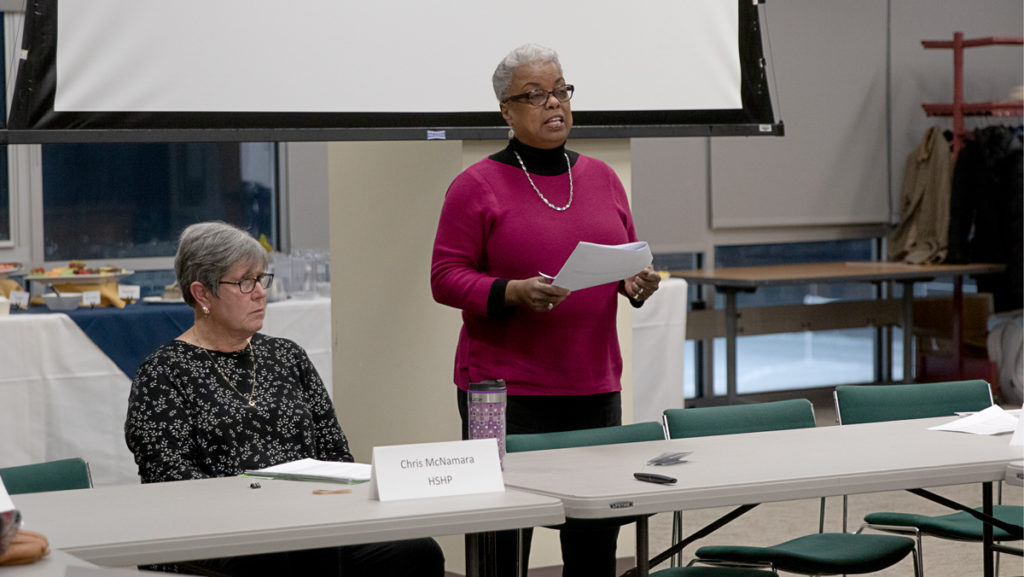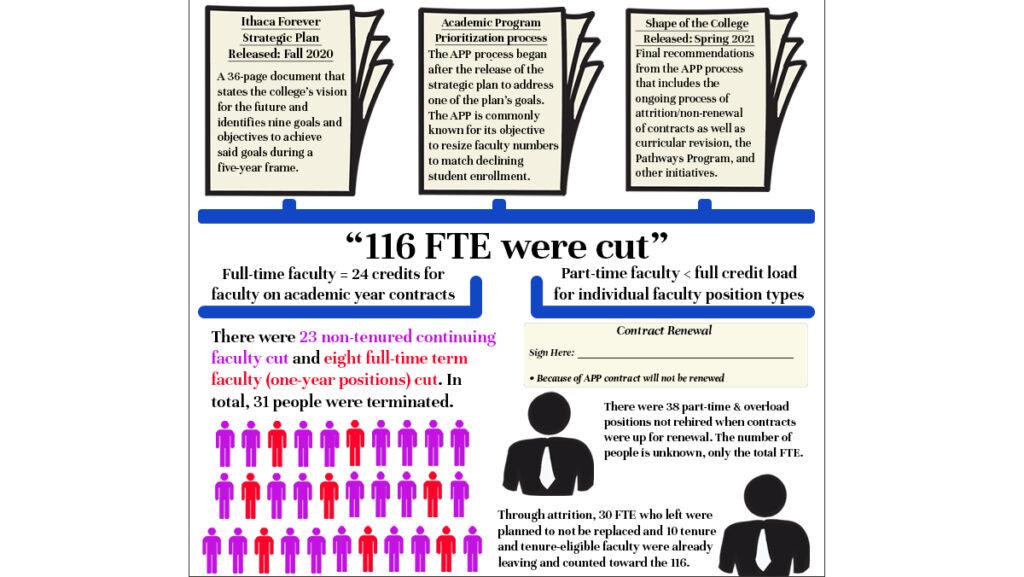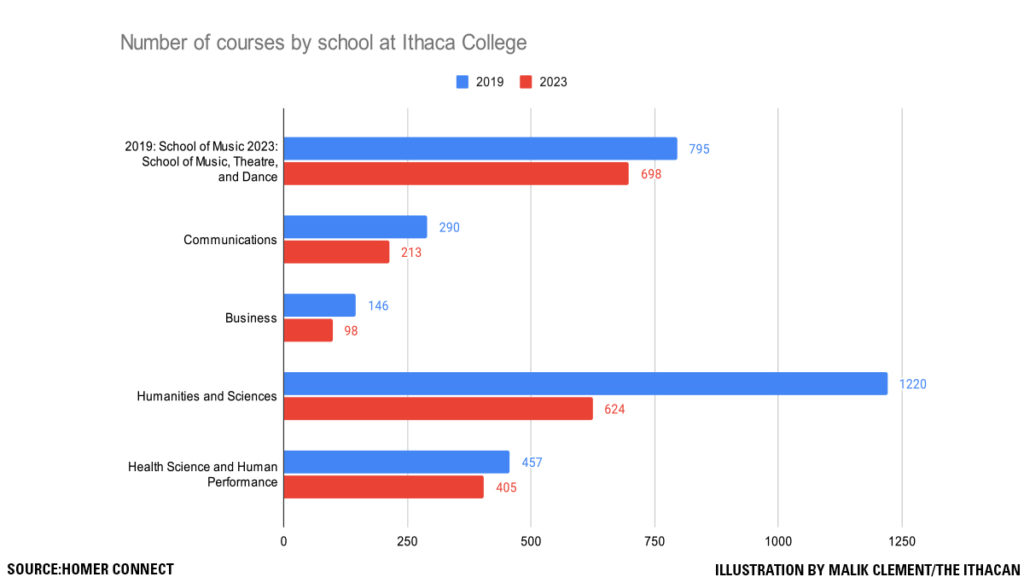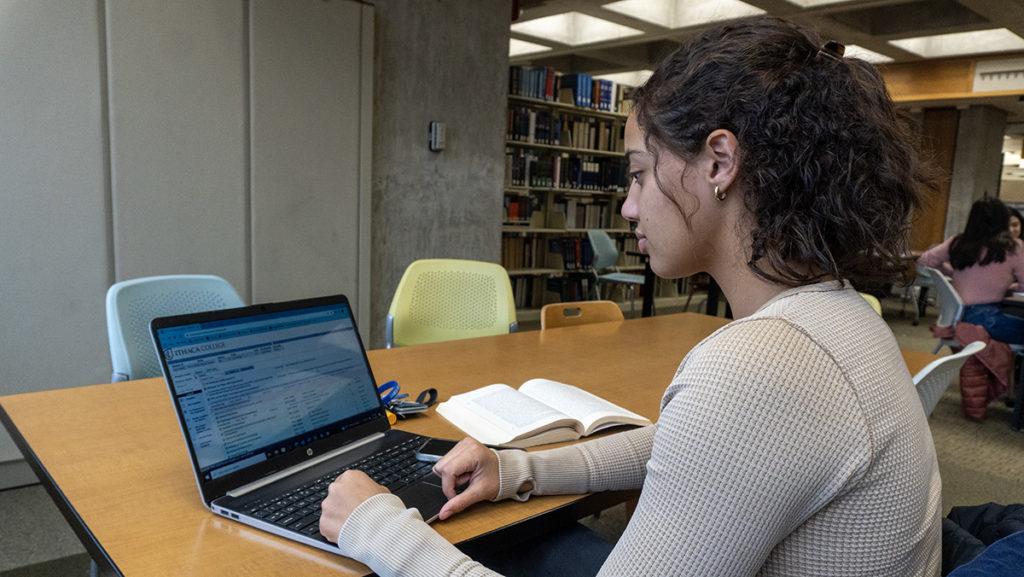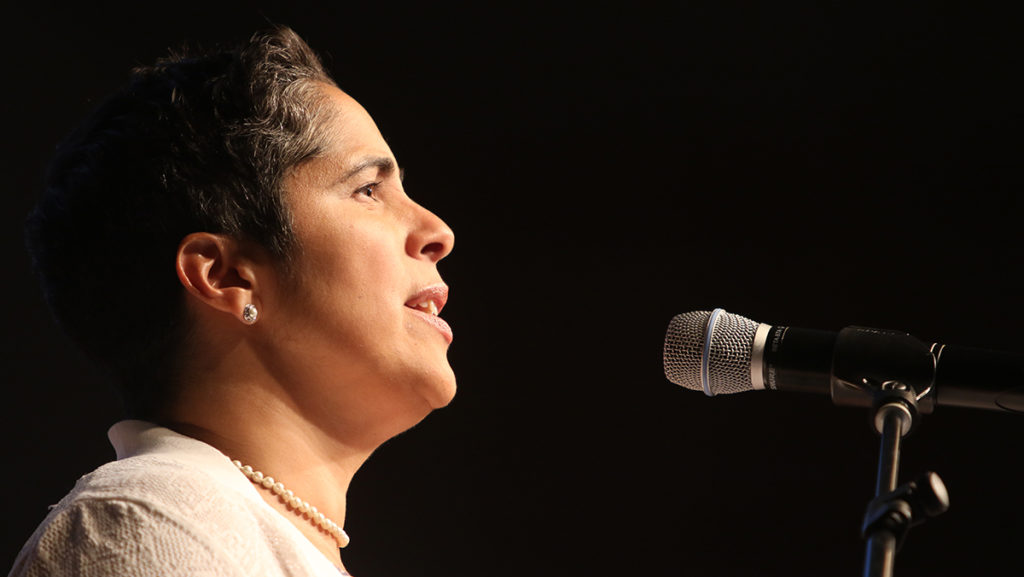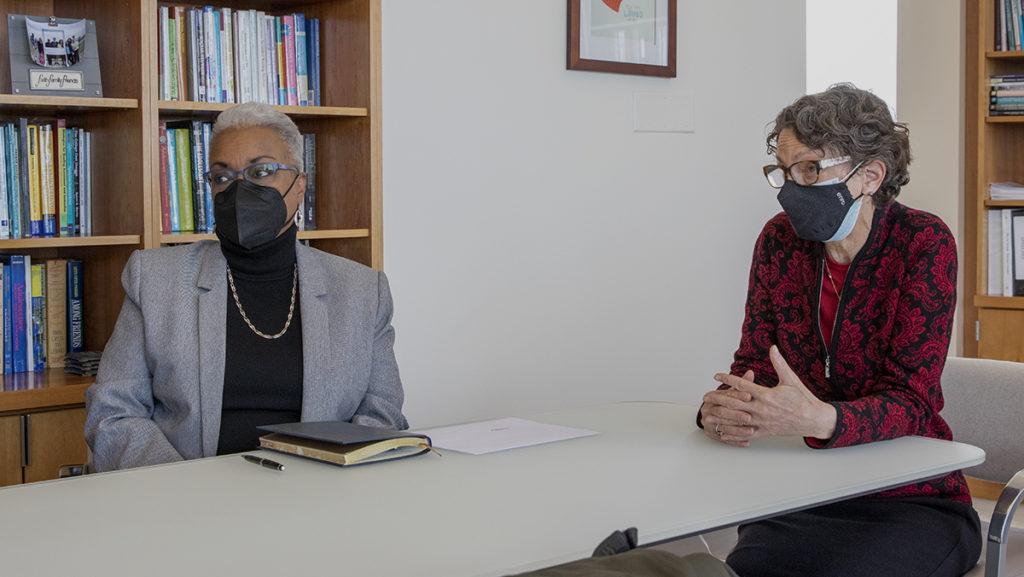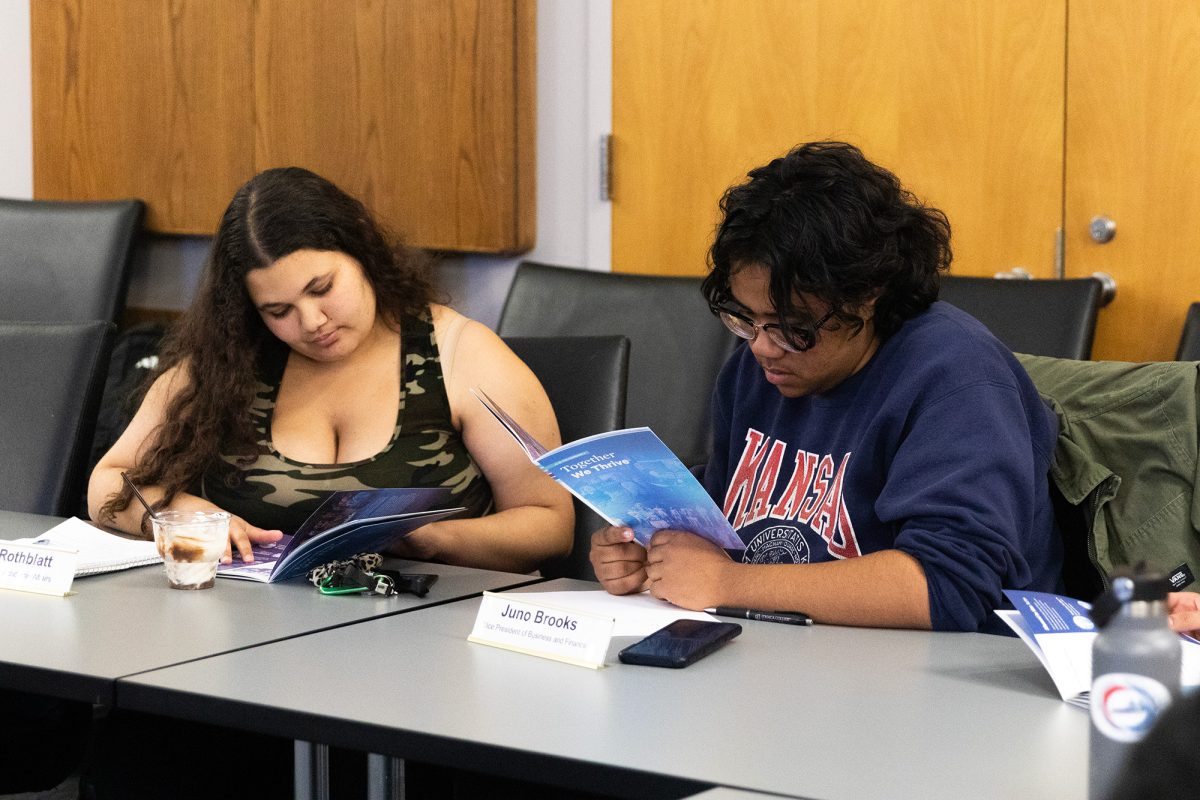Approximately 130 Ithaca College faculty members will lose their jobs because of decreased enrollment, said La Jerne Cornish, provost and senior vice president for academic affairs, at the Faculty Council meeting on Oct. 6. Cornish also discussed tentative return-to-campus plans for Spring 2021.
The college needs to cut $30 million from its budget, Cornish said, because enrollment has dropped for the 2020–21 academic year. Laurie Koehler, vice president for marketing and enrollment strategy, said there are 4,957 undergraduate students enrolled for Fall 2020. This number has decreased from 5,852 undergraduate students in Fall 2019 and 6,101 in Fall 2018, according to the Office of Analytics and Institutional Research (AIR). More students than in past years deferred enrollment or took leaves of absence this semester. Koehler said 143 students deferred enrollment and 391 students took leaves of absence. The college would usually expect 20 to 30 students to defer enrollment and 100 to take leaves of absence, Koehler said.
To maintain a 12-to-1 student-faculty ratio, the college will only need 415 out of its 547 faculty members, Cornish said.
“We need to look at student-faculty ratio,” Cornish said. “We need to look at administrative-student ratio. We need to look at staff-student ratio. So we need to look at all those things, and at the end of the day, many staff have already been furloughed. We are not going to hit our targets just by reducing staff.”
At the end of April, the college had cut at least 167 staff positions because of both the COVID-19 pandemic and the college’s strategic plan. The majority of those who were laid off were employees in the Offices of Facilities and Dining Services. Dave Maley, director of public relations, said the total number of staff members who have been cut will be released when all of the cuts are made. At the All-College Gathering on Sept. 22, Hayley Harris, vice president for human resources and planning, said that there will be additional furloughs throughout the semester.
Cornish said the college created a dashboard to analyze which departments are bringing the fewest students to the college. Entire departments may be discontinued, Cornish said, and it is possible for tenured faculty to lose their jobs. There are 90 undergraduate majors, 76 undergraduate minors and 16 graduate programs at the college.
The college has not yet made any decisions regarding which departments and faculty members will be cut. Cornish said the college will recommend to the Academic Program Prioritization committee which faculty members should be “nonrenewed” by Dec. 31. Faculty members whose positions will not be renewed for the 2021–22 academic year will be notified in March 2021.
Tom Swensen, professor in the Department of Exercise Science and Athletic Training, said he is concerned that more positions than necessary will be cut.
“It will be very hard to rally everybody to do all the other things that we need to do, like to improve retention and enhance enrollment and tweak curricula to maybe make them more appealing to prospective students, while we’re simultaneously cutting maybe potentially more positions than we need to cut,” Swensen said.
Projections suggest enrollment will continue to drop in coming years, Koehler said. She said the college is hoping to increase enrollment by strengthening academic programs and changing its pricing and financial aid strategy.
The college has been increasing its tuition over the years. Tuition for the 2020–21 academic year is $46,610, a 2.95% increase from the previous year. The college increased its tuition $45,275 for the 2019–20 academic year, also a 2.95% increase from the previous year.
The council discussed other strategies to increase enrollment, and several faculty members suggested more national and international recruiting.
Koehler cited data that predicts states in the Northeast will experience a 15% decrease in students enrolling in higher education from 2012 to 2029. Much of Ithaca College’s student population comes from Northeastern states, with 2,408 students residing in New York state, according to AIR.
Rebecca Lesses, associate professor and Jewish Studies coordinator for the Department of Philosophy and Religion, asked Koehler if the college is recruiting in other parts of the country. She mentioned she has had an Asian-American student complain to her about the lack of Asian students at the college and asked Koehler why enrollment of Asian, Asian-American, Latino or African-American students is not higher.
In Fall 2020, 72.2% of students are white, according to AIR. There are 123 fewer students of color enrolled this year compared to last year, but because there are fewer students overall this year, students of color now make up 23.7% of the student body, whereas last year they made up 22.2%.
Koehler said this is not an issue resulting from recruitment but rather the environment of the college. Students have voiced concerns about racism at the college in the past, and on Oct. 6, the Student Governance Council and the Students of Color Coalition hosted the Stand for Justice webinar to discuss ways to address racism at the college.
“You can enroll students of color when you are a campus that is welcoming to students of color,” Koehler said.
Cornish also presented a tentative reopening plan for Spring 2021. The college will use a phased approach for bringing students back to campus, with the first two weeks of classes being remote. The first phase of students will return to campus Jan. 21. Cornish did not specify if the college will be using the same groups as the planned phased move-in for Fall 2020.
The Spring 2021 academic calendar states that online instruction will begin Jan. 25, with on-campus instruction beginning Feb. 8. Final exams will end May 14. There will be no weeklong spring break, but there are individual days off instead. These are Feb. 16; March 3, 18 and 29; and April 23.
Faculty will choose to teach their classes fully online or with an in-person and online hybrid model. Although faculty members were able to teach remote classes from classrooms in Fall 2020, this will not be allowed for Spring 2021, Cornish said. This is so students can reserve classroom spaces to do their online classes.
Faculty will also need to create seating charts for their classes for easier contact tracing if a student contracts COVID-19.
Cornish said the college has received positive responses from students from a survey held by the Remote Engagement Strategy Team, a group that develops strategies to help students learn in a remote environment, about their online classes and commended the faculty for this.
“Looking at the feedback from students about how they feel about their professors this semester was very heartwarming,” Cornish said. “I just want to say thank you for all the work you’ve done and continue to do.”


